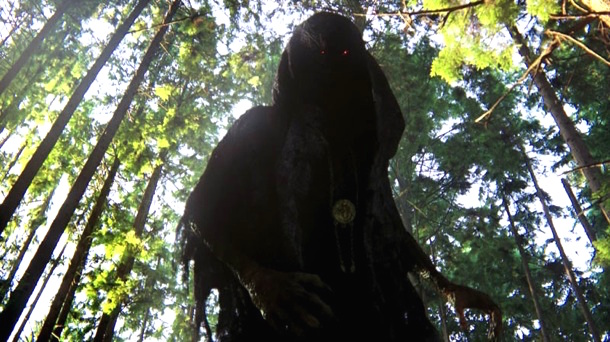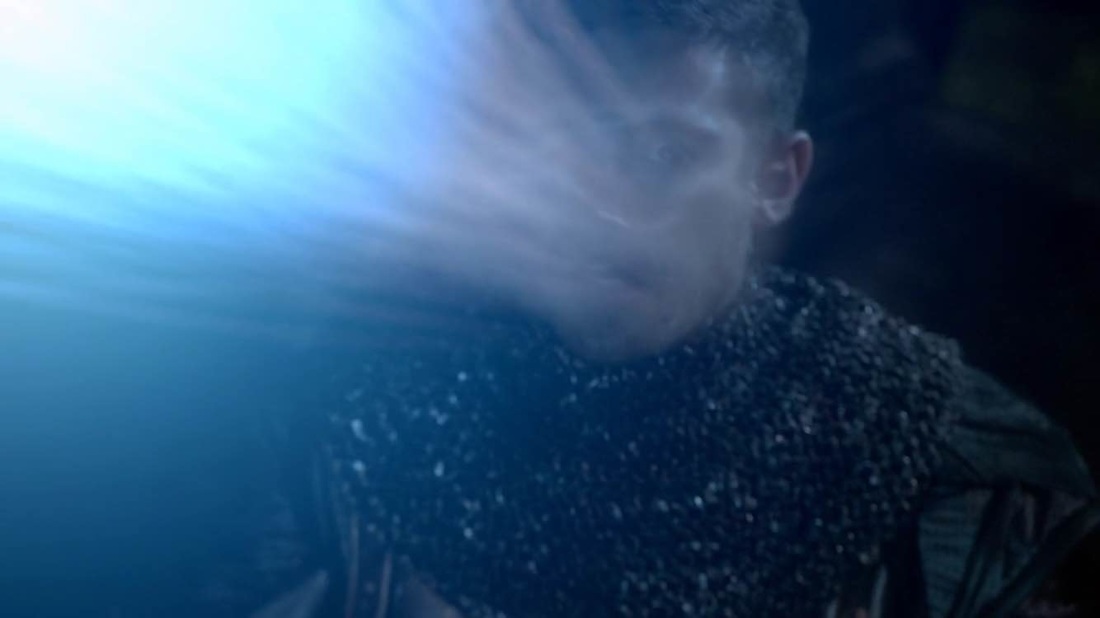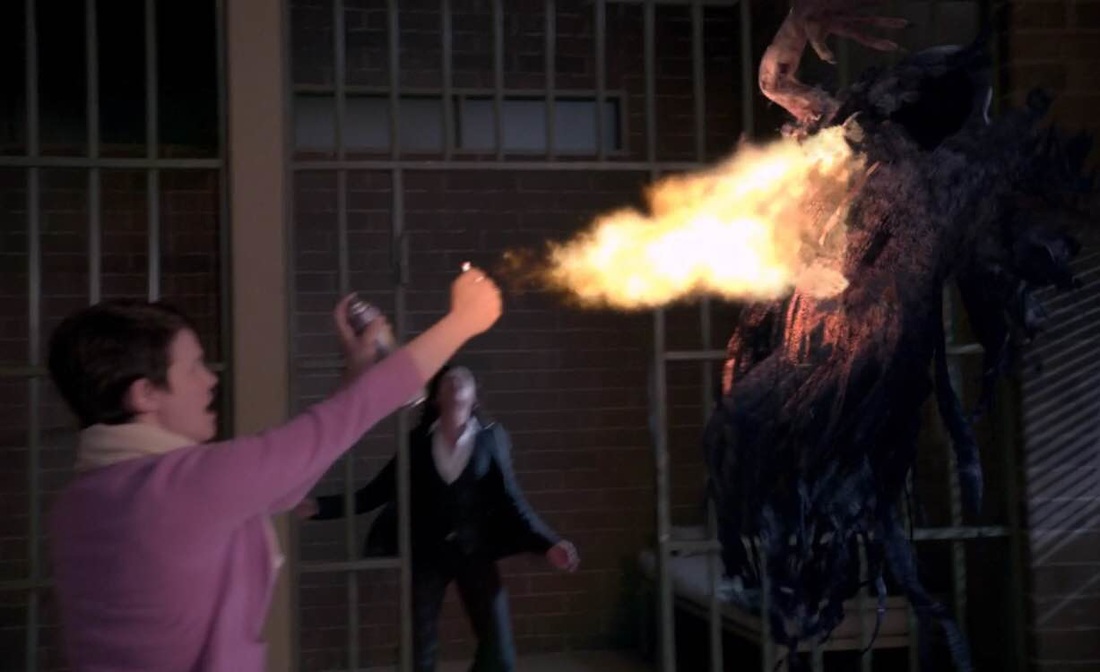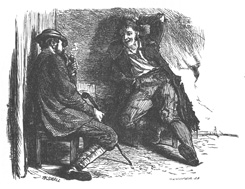|
What in the Name of Rumplestiltskin’s Leather Pants is a Wraith? by Teresa Martin--@Teresa__Martin That was the question on many a fan’s lips after a creature blasted through the floor of Aurora’s elaborate sleeping chamber in “Broken,” the Season Two premiere of Once Upon a Time. This creature was not given a name until Mulan described it as a Qui Shen, and translated it as “wraith.” She then clarified that this was a “soul-sucker.” The only further information that could be gleaned from the episode was that this creature marked a person and would be driven away by light. Subsequent personal research unearthed results that were unexpected. The trail led almost immediately to Scotland. However, the original wraith was different from what one may have read in The Lord of the Rings and other fantasy literature. For a wraith is not a black clothed soul-sucking creature, but rather the duplicate of one’s own soul. The word “wraith” first appeared approximately in the 16th century, meaning “spirit.” A wraith is defined as “a ghost of a person on the verge of death . . . an exact likeness of its human counterpart, showing itself to relatives of that person as he is about to die …. [This] appears to have developed from a very old belief that a person’s soul is an exact duplicate of his or her living body (Haining 215).” A person will be suddenly confronted face to face with his double and that will be a sign that his death is near, but most commonly it is seen by others (Briggs 309-310). For the latter, it would occur “if someone were to catch a glimpse of a person whom they knew passing the door or window, and on looking outside were to find no such person there …. This was considered a remarkably clear instance of a person’s wraith, or spirit being seen at the time of death (Napier 70).” The traditions of the traditional Qui-Shen are also incorporated into the plot. In the attack on Prince Phillip, daylight scares the wraith away. Later, Snow and Charming use fire to repel the creature as well as lead it into the magical hat. Moreover, when Rumpelstiltskin presses the medallion into Regina’s hand, she has the appearance of one who has been weakened, as though perhaps some of her energy was taken from her soul. The show has therefore utilized ancient Chinese Traditions with modern lore resulting in the enrichment of the show’s canon. One of the most fascinating aspects of Once Upon a Time is how the writers use stories and legends from the world over. “Broken” informed fans that the show would be exploring deeper realms of literature and myth. Delving into the concept of the soul being taken by a Qui Shen introduced Chinese myth as a significant part of the story which affected residents of both the Enchanted Forest and Storybrooke. Furthermore, the door is open for the appearance of these frightening portents as told in ancient lore. Perhaps in the next Storybrooke deaths, the characters will possibly see their wraiths thereby sending the same chills to the audience that the Celtic people of long ago felt when telling these tales on cold winter nights. How then does Once Upon a Time incorporate the wraith into its canon? Mulan calls the wraith a “Qui-Shen.” The Qui-Shen is indeed a spirit in Chinese tradition and is somewhat similar to the creature introduced in “Broken,” yet it is a ghost-like creature that is difficult to define. When interviewing a Chinese acquaintance, he had a great deal of difficulty translating the concept since the meanings of words in Chinese are very subtle. He explained that the belief behind the Qui Shen centers on the concept that all souls become ghosts after death, and can go to what many call Heaven or Hell. The Qui Shen are the souls doomed to Hell and attempt to escape this fate. They do so by finding a human with a weak spirit, and then they attack it by taking its energy little by little. Victims cannot have their souls sucked out, but when their energy is depleted by the assaults over a sustained period of time, they die. The Qui-Shen then is a horrible threat as they can murder in this manner. The motivation for the attacks is to enter the body of the victim to escape damnation. There are a few protections people can make. Because the Qui Shen must flee from daylight, people choose to stay inside at night, since that is when the ghost is able to travel and attack, especially between the hours of midnight and five in the morning. If an attack is imminent, one can use a mirror. Mirrors in Buddhist tradition are “instruments of enlightenment.” In China a mirror “takes fire from the Sun (Chevalier 658).” For Taoists mirrors “[reveal] the nature of evil influences . . . [drive] them away and [afford] special protection against them.” Hence there is still a tradition in Chinese culture to place a mirror at the entrance of a home. In Shinto, mirrors serve “like crucifixes in Catholic Churches (Chevalier 659).” Another object is the use of a red rope. Red is the symbol of life connected as it is to blood. It is also the color connected with fire, something from which a Qui Shen flees (Chevalier 795). A person may also call upon the holy gods for protection. Once Upon a Time appears to take most of its version of a wraith from modern lore with little connection to the more traditional specters. Gaming websites, and most notably, the Dementors from Harry Potter seem to be the sources most relied upon by the creators. In these descriptions the wraith has the appearance of The Grim Reaper and sucks out the souls of its victims. But there are aspects that are unique to Once Upon a Time’s incarnation. One is that the wraith can be summoned by dark magic. This happens when Rumplestiltskin summons the creature using his dagger and a medallion to mark its prey. The soul appears to go inside the medallion where hopefully rescue is possible. This would be consistent with the Chinese tradition that the soul wanders for about 100 days. A finite time to rescue a wraith’s victim may be part of the drama later in the season. There are many old tales from Scotland that tell of such stories. One is the story of “The Death Portent” reproduced in its entirety: The Irish have an equivalent specter called a fetch (Spence 158). One story of this spirit, “The Doctor’s Fetch,” tells of a doctor’s wife who in the middle of the night saw her husband standing by a table in their room. To her horror, she observed that her husband was still lying beside her. She checked to be certain that he was asleep and was relieved when he appeared oblivious to the intruder. However, she was mistaken. The next day her husband met with a colleague and asked about his belief in the spirits. The colleague replied that fetches “are mere illusions, produced by a disturbed stomach acting upon the excitable brain of a highly imaginative or superstitious person." The enquirer then admitted that he had seen his double the previous night and declared that he must be “highly imaginative or superstitious.” Hence, in certain horror, the reader is made aware that the doctor had been feigning sleep and seen his fetch. Later that night the man died a painful death as he suffocated from a burst vessel in his lung (Kennedy 189-190). These are stories in a grand tradition that can both entertain and scare the living daylights out of people. A farmer's wife, who resided on the banks of the Ale, near St. Boswells’, looking out a window, thought she saw a funeral approaching; and at once mentioned the circumstance to some neighbours, then with her in the house. They ran out to look, but came back and sat down again, saying she must be mistaken, for there was nothing of the kind to be seen. The woman felt restless, however, and out of spirits; she could not help going to the window again, and again she saw the funeral moving on. Her friends ran out of doors and looked along the road, but still could perceive nothing; a third time she went to the window, and exclaimed, "It is fast coming on, and will soon be at the door." No other person could discern anything; but within half- an hour a confused noise was heard outside, and the farm-servants entered, bearing her husband’s lifeless body. He had died suddenly, by a fall from his cart. Works Cited
Anonymous. “The Death Portent” ElectricScotland.com N.P. 10-26-12. http://www.electricscotland.com/kids/stories/portent.htm Briggs, Katharin. British Folk Tales and Legends: A Sampler. New York: Routledge Classics, 2002. Chevalier, Jean. Alain Gheerbrant. A Dictionary of Symbols. New York: Penguin Books Lts., 1996. Haining, Peter. A Dictionary of Ghost Lore. Englewood Cliffs, NJ: Prentice Hall, Inc., 1982. Kennedy, Patrick. Legendary Fictions of the Irish Celts. Amazon Digital Services, Inc. 2010. Napier, James. Western Scottish Folklore and Superstitions. Maple Shade, NJ: Lethe Press, 2008. Lewis Spence. An Encyclopædia of Occultism, a Compendium of Information on the Occult Sciences, Occult Personalities, Psychic Science, Magic, Demonology, Spiritism and Mysticism. “The Doctor's Fetch.” 158-159 New York: Dodd, Mead & Company, 1920.
0 Comments
Leave a Reply. |
OriginsExplore the Arthurian legend surrounding Lancelot, take a trip into the woods to discover the mythology behind Red Riding Hood or learn more about a modern day hero called Snow White. Origins provides unique insights and perspectives from talented writers into the characters we know and love, going far beyond the boundaries of Storybrooke. Archives
August 2016
Categories
All
|




